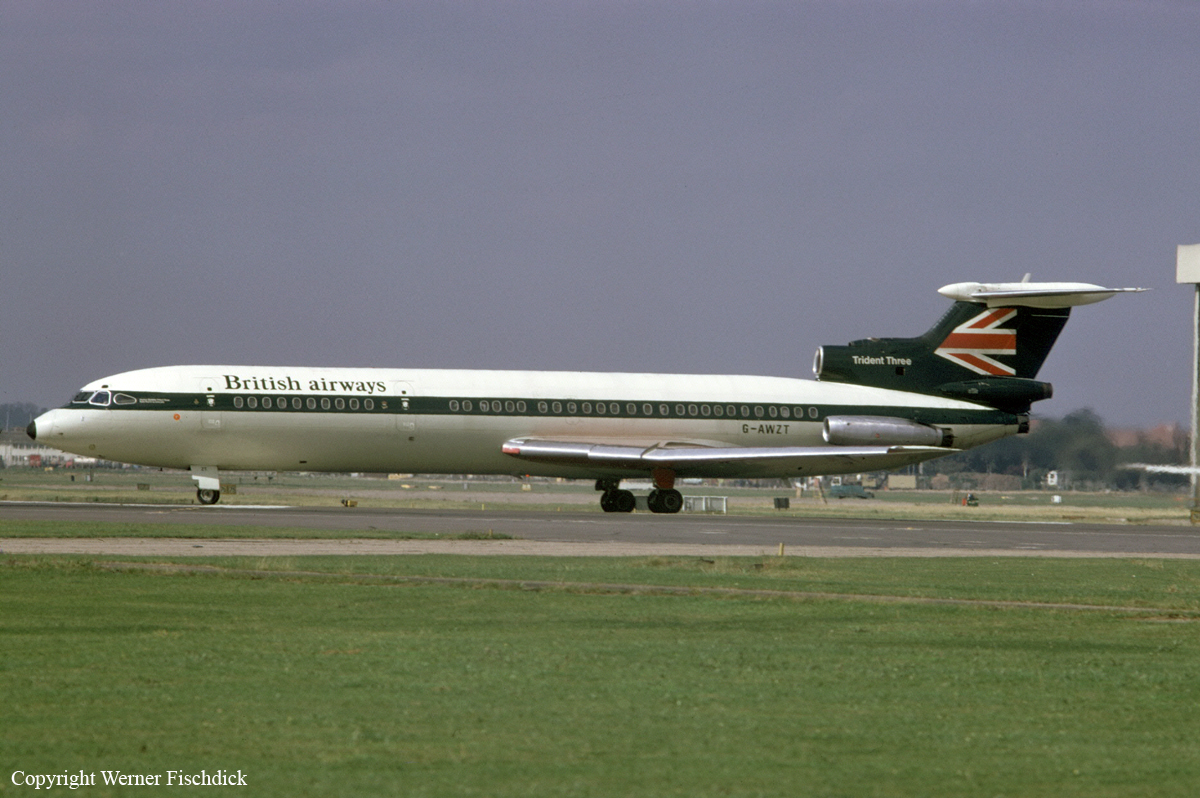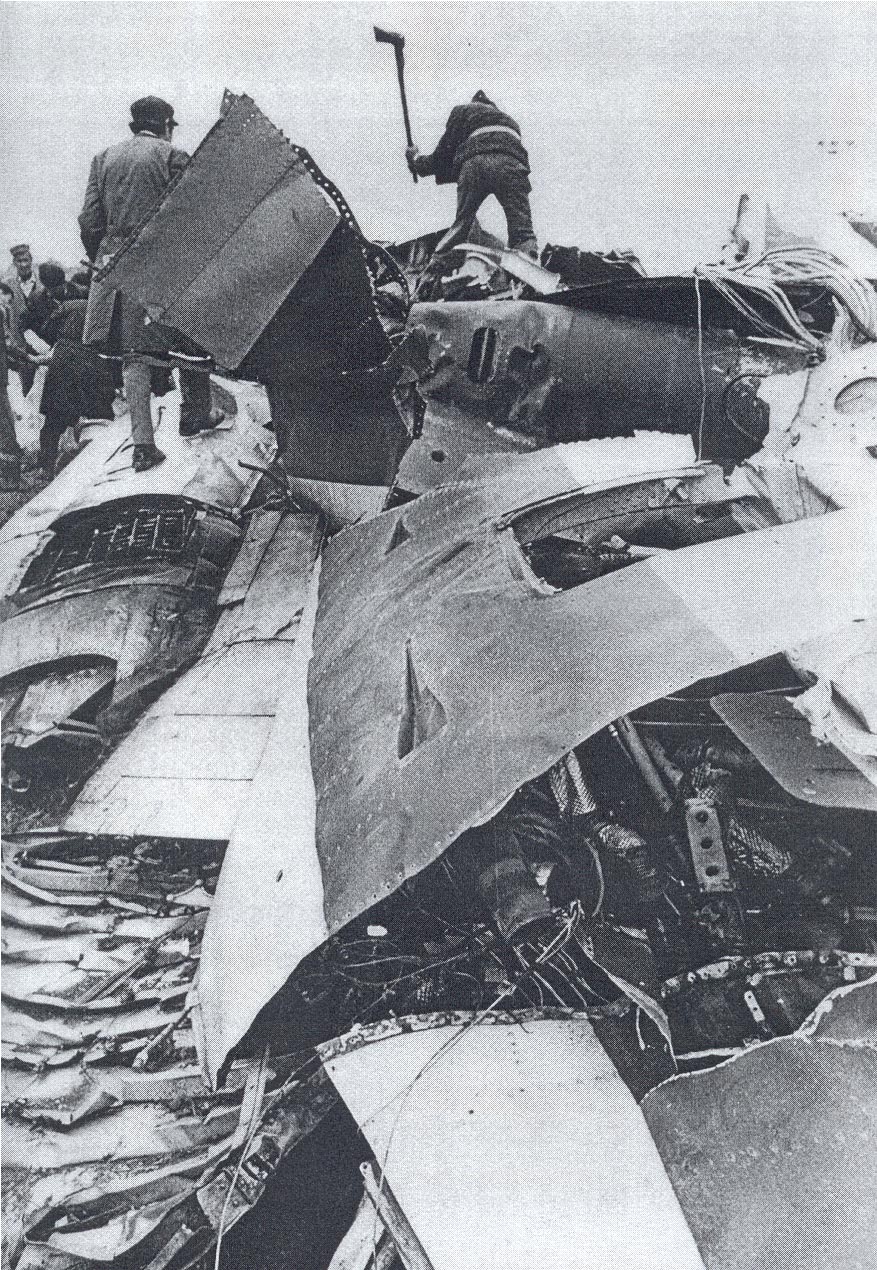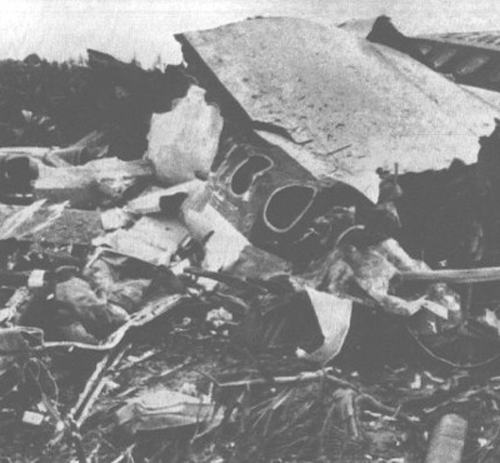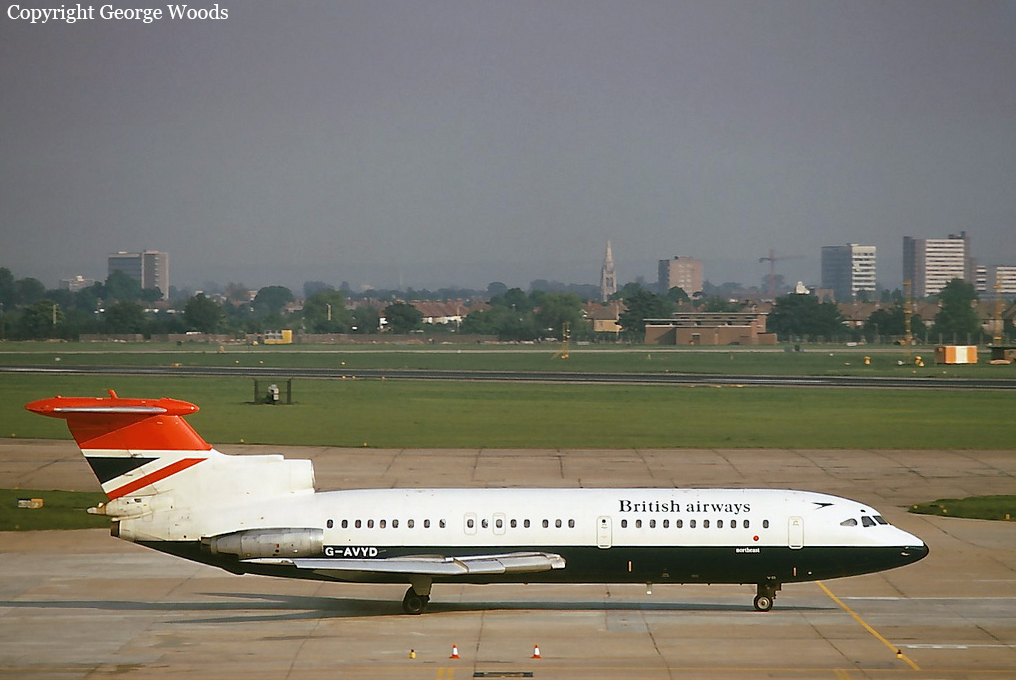Country
Operator Image

Crash of a Hawker Siddeley HS.121 Trident 3B in Vrbovec: 63 killed
Date & Time:
Sep 10, 1976 at 1114 LT
Registration:
G-AWZT
Survivors:
No
Schedule:
London - Istanbul
MSN:
2320
YOM:
1972
Flight number:
BA476
Crew on board:
9
Crew fatalities:
Pax on board:
54
Pax fatalities:
Other fatalities:
Total fatalities:
63
Captain / Total hours on type:
399.00
Copilot / Total hours on type:
1592
Aircraft flight hours:
8627
Aircraft flight cycles:
6952
Circumstances:
Hawker Siddeley HS-121 Trident 3B operated by British Airways as flight BE476 and a McDonnell Douglas DC-9-32, operated by Inex-Adria Aviopromet, were destroyed when both aircraft crashed near Vrobec following a mid-air collision. All 176 on board both aircraft were killed. The Trident was on a scheduled flight from London-Heathrow Airport in England to Istanbul-Yesilköy Airport in Turkey, carrying 54 passengers and a crew of 9. The aircraft took off at 08:32 GMT and the flight proceeded normally. First contact with the Zagreb Area Control Centre was established on the Upper Sector frequency 134,45 MHz at 10:04 GMT. The flight was requested to report passing the Zagreb VOR at flight level 330. The aircraft flew along the centreline of airway UB5 with slight side deviation 1-2 km to the right due to wind. At 2 minutes and 50 seconds before the collision, the aircraft changed heading to 115° to head back towards the airway centreline. Airspeed was 295 Kts. The DC-9 departed Split Airport at 09:48 GMT to fly 108 West German tourists back to Cologne. Flight JP550 was issued instructions to climb to FL180. At 09:54 the flight, on passing flight level 130, switched to the Zagreb Area Control Centre lower sector east frequency of 124.6 MHz, receiving clearance to climb to FL240 and later to FL260. At 10:03 the crew switched to the frequency of the middle sector controller, responsible for safety and regulation of traffic between flight levels 250 and 310. This controller cleared to flight to FL350. The aircraft assumed a heading of 353° and a speed of 273 Kts as it passed a beam and to the west of the KOS NDB, approximately 2-3 km from the airway centreline. While heading towards the Zagreb VOR, the flight crew radioed the Upper Sector controller on frequency 134,45 MHz at 10:14:04 GMT and reported that they were climbing through FL325. The controller then requested, in Serbo-Croatian, flight JP550 to maintain their present altitude and report passing the Zagreb VOR. The controller stated that an aircraft was in front passing from left to right at FL335, while in fact BE476 was at FL330. At 10:14:38 the crew replied, also in Serbo-Croatian, that they where maintaining FL330. Three seconds later both aircraft collided. The outer five meters of the DC-9's left wing cut through the Trident's cockpit. Due to the sudden decompression, the forward part of the Trident's fuselage disintegrated. The remaining part of the fuselage struck the ground tail-first. With it's left wing torn off, the DC-9 tumbled down and hit the ground right-wing first.
Probable cause:
Direct cause of the accident was the struck of the DC-9 wing into the middle side of the Trident 3B fuselage which occurred at the height of 33.000 feet above Zagreb VOR so that both aircraft became uncontrollable and fell on the ground.
- Improper ATC operation,
- Non-compliance with regulations on continuous listening to the appropriate radio frequency of ATC,
- Non-performance of look-out duty from the cockpits of either aircraft.
- Improper ATC operation,
- Non-compliance with regulations on continuous listening to the appropriate radio frequency of ATC,
- Non-performance of look-out duty from the cockpits of either aircraft.
Final Report:




Crash of a Hawker-Siddeley HS.121 Trident 1E-140 in Bilbao
Date & Time:
Sep 15, 1975 at 1548 LT
Registration:
G-AVYD
Survivors:
Yes
Schedule:
Bilbao - London
MSN:
2138
YOM:
1969
Flight number:
BA552
Crew on board:
7
Crew fatalities:
Pax on board:
110
Pax fatalities:
Other fatalities:
Total fatalities:
0
Captain / Total hours on type:
1685.00
Copilot / Total hours on type:
782
Aircraft flight hours:
12892
Circumstances:
The taxi drills were actioned by the First Officer and the Flight Engineer during this time and "runway items" were completed after the Commander turned the aircraft through 180° close to the threshold of runway 28, aligned it on the runway centre line, and selected the wheel brakes to park. A power setting of 100 per cent thrust was made, all engine indications were checked as correct, and the engine relight switches were selected 'ON' before the wheel brakes were released and the takeoff run commenced at about 13:46 with the Commander piloting the aircraft. The aircraft accelerated normally ; the First Officer called out the indicated airspeeds at 80 knots and 100 knots and made a call of 'Wet V1' at 117 knots then removed his hand from the throttles. At the time or just after 'Wet V1' was called the Flight Engineer and the First Officer heard a noise which the latter crew member attributed to the aircraft's entry into standing water. According to the Flight Engineer the aircraft appeared to decelerate at the same time that he heard the noise. The Commander felt a marked deceleration consistent with a loss of engine power, whereupon he immediately closed the throttles, called "Abandon", deployed the airbrakes and lift dumpers and applied the wheel brakes fully. However according to the Flight Engineer all engine indications had been normal prior to the closing of the throttles. On seeing a hand close the throttles the First Officer selected emergency reverse thrust on the pod engines, checked the engine indications were correct and maintained the application of emergency reverse thrust until the aircraft eventually came to rest. The First Officer and the Commander checked the indicated pressures on the wheel brake gauges which showed the wheel brakes were fully applied. The initial deceleration felt satisfactory to the crew, then quickly deteriorated and the First Officer formed the impression that the aircraft was aquaplaning. The Flight Engineer then noticed that the aircraft had begun to drift gradually to the left of the runway centreline apparently as the result of a deliberate action by the Commander. Subsequently it became evident to the Commander that he could not bring the aircraft to a halt within the runway confines. Some 200 metres to 300 metres before the end of the runway he turned the aircraft to the left using nose-wheel steering and applied full left rudder. As the nose wheels ran off the runway onto the grass, the aircraft slewed to the left then skidded broadside to the right for a short distance before it came to an abrupt stop at the side of the runway in a right wing down attitude with the right wing tip close to the threshold lights of runway 10. Evacuation drills were initiated and the passengers left the aircraft in a reasonably orderly manner, the majority by slide from the main exit doors and foremost right overwing emergency exit. Catering equipment in the galleys came out of stowage during the accident obstructing access to the forward emergency exit door and preventing use of this exit and its slide during the evacuation. All 117 occupants escaped uninjured while the aircraft was considered as damaged beyond repair.
Probable cause:
The accident was caused by the Commander's decision to abandon take-off on a wet runway at or close to V 1 . Contributory factors were the low effective braking coefficient of friction achieved by the aircraft and the failure of the Commander to ascertain the extent and depth of water present on the runway prior to takeoff.
Final Report:

